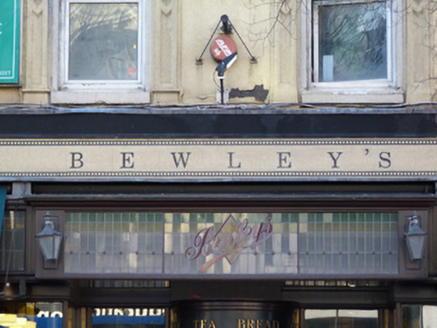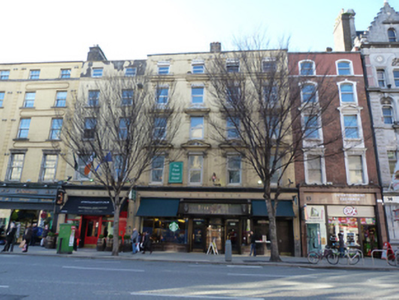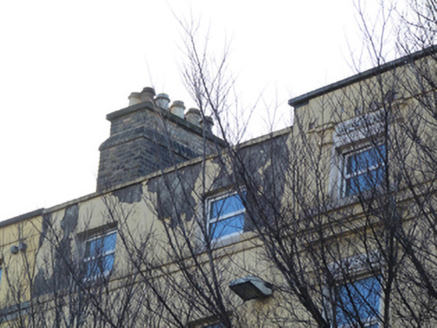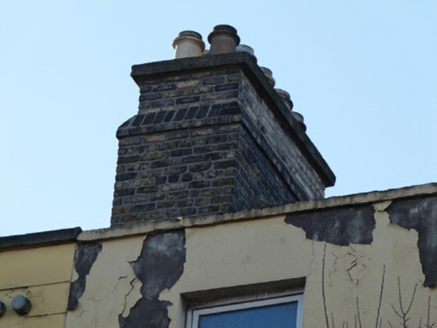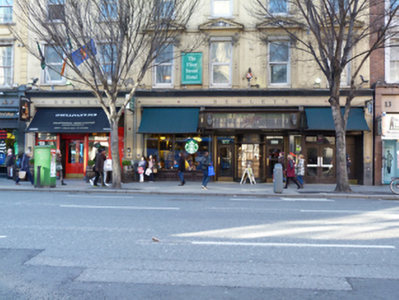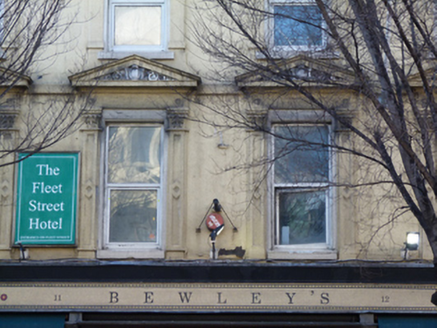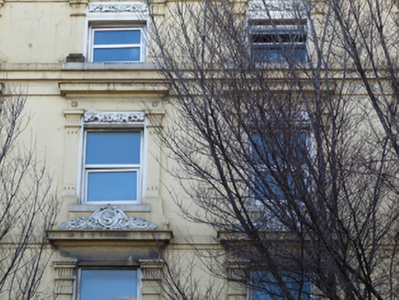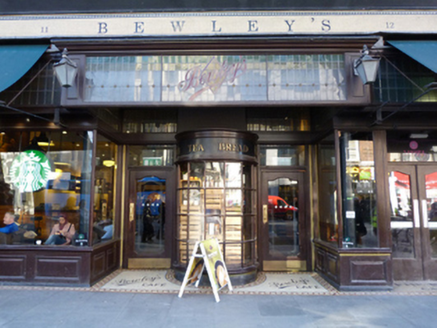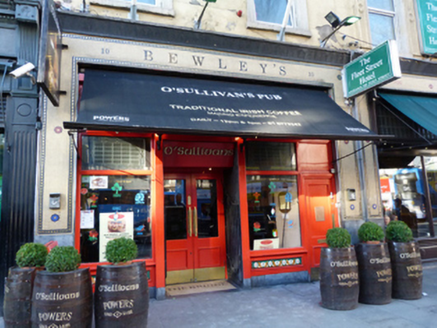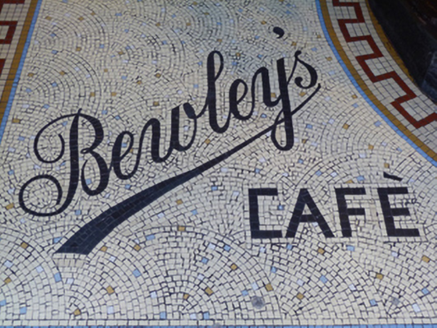Survey Data
Reg No
50020221
Rating
Regional
Categories of Special Interest
Architectural, Artistic, Historical, Social
Previous Name
Bewley's
Original Use
House
Historical Use
Restaurant
In Use As
Restaurant
Date
1780 - 1800
Coordinates
315968, 234261
Date Recorded
16/02/2015
Date Updated
--/--/--
Description
Pair of two-bay five-storey former houses and shops over basements, built c.1790, façade remodelled in 1867, with shopfronts to front (east) elevation. Now in use as café and hotel. M-profile hipped roof hidden behind stepped rendered parapet with granite coping, red brick chimneystacks having clay pots. Smooth rendered walls. Square-headed openings with granite sills, continuous render sill course to fourth floor, having render pilasters supporting pediments to first floor and entablatures with decorative foliate Portland stone panels to upper floors. Replacement uPVC windows throughout. Timber shopfront comprising timber panelled risers with plain square-headed display windows having bevelled glass transom lights. Recessed twin square-headed openings with mosaic tiled threshold and timber doors having plain overlights, separated by curved multi-pane glazed panel with curved timber fascia having raised lettering and leaded stained glass over panel. Framed by mosaic tiled pilasters and fascia.
Appraisal
Westmoreland Street, named after the tenth Earl of Westmoreland, was developed by the Wide Street Commissioners in the late eighteenth century as part of a network of streets connecting the newly built Carlisle Bridge (now O’Connell Bridge) and College Green. These buildings formed part of a unified terrace, designed by Henry Aaron Baker (1753-1836), of five-storey buildings formerly with stone shopfronts to the front. As new commercial and financial uses were introduced to the street in the second half of the nineteenth century, many façades were remodelled. In 1867, No. 11 was still in use as a Union Bank branch, when it was refaced to designs by G.W.Murray. Endeavouring to expand into the coffee business, the Bewley family, renowned tea importers during the early nineteenth century, opened a number of cafés in the city. They opened the ‘Oriental Café’ at No. 10 in 1896 and subsequently extended into these neighbouring buildings to the north. The design of this and the other Bewley’s cafes drew heavily on that of coffee houses in continental Europe. The café played a significant role in the social history of the city until its closure in the 1980s.
